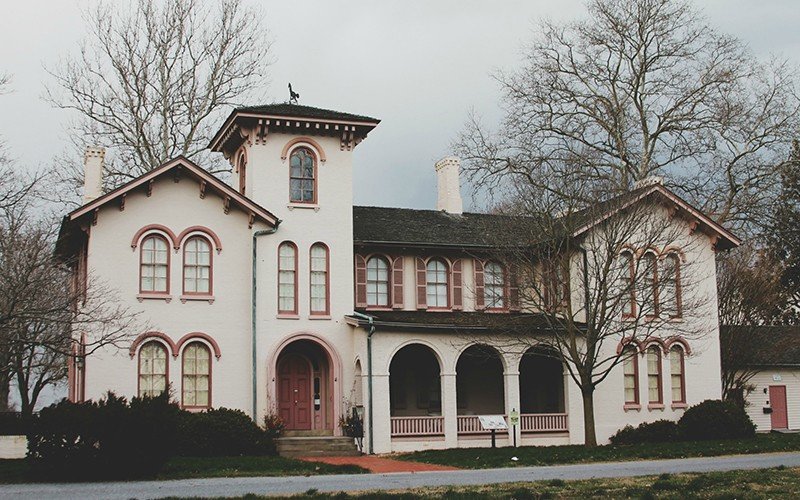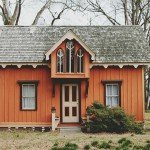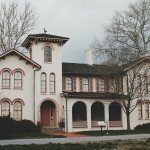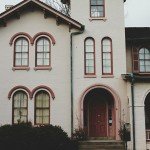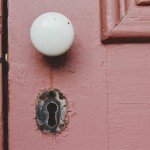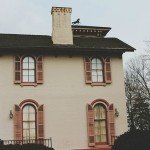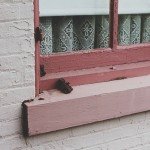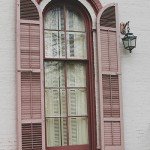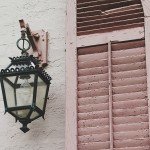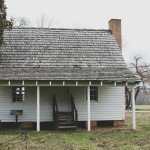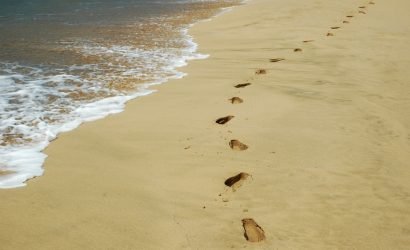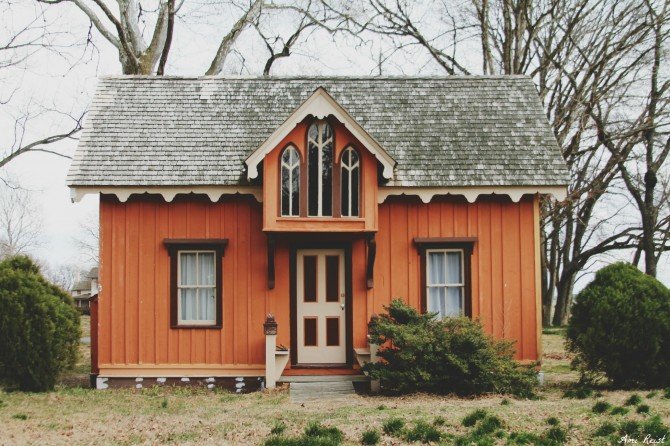 Down a long pebble driveway and overlooking the railroad tracks across from the Seaford Industrial Park off of the Market Street Extension sits a tiny little orangey-peach house. It looks kind of like a gingerbread house and is marked as a Delaware State Historical Landmark according to a big blue placard just feet away. Behind the little peach gatehouse is a large plantation – also painted in a funky color – light pink.
Down a long pebble driveway and overlooking the railroad tracks across from the Seaford Industrial Park off of the Market Street Extension sits a tiny little orangey-peach house. It looks kind of like a gingerbread house and is marked as a Delaware State Historical Landmark according to a big blue placard just feet away. Behind the little peach gatehouse is a large plantation – also painted in a funky color – light pink.
These buildings, the smaller one being a gatehouse and the larger one a mansion, were constructed by William Henry Harrison Ross. He was born in Laurel, DE in 1814 and died in 1887. He served as Governor of Delaware between 1851 and 1855.
In 1859, Ross constructed this elaborate brick Italian Villa-styled structure featuring a three-story center entry tower on his 1,395 acre farm. Currently owned by the Seaford Historical Society, the property also includes a period barn, granary, and carriage house.
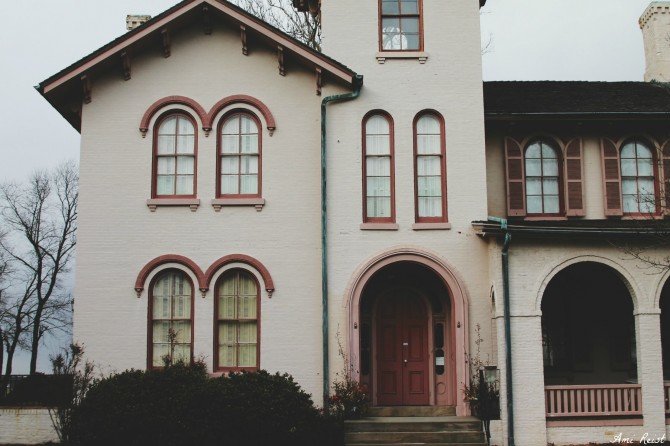 Ross’ Peach Farm & the Rail Road
Ross’ Peach Farm & the Rail Road
The home is painted in traditional Victorian-era colors; mauve, dusty pink, reddish brown, and bright peach. It is believe that the Governor may have had another motive when he chose the colors… Governor Ross was a peach farmer. His paint colors reflected the natural colors of his favorite fruit.
Ross was one of the first extensive growers of peaches in Sussex County; having more than 800 acres under cultivation at one time. He was a founder of the first state agricultural society in 1849. Ross served as a Sussex County director of the Farmers Bank of the State of Delaware for 10 years from 1876 to 1886.
As governor, Ross encouraged legislation that finally achieved the funding of the Delaware Rail Road Company that had struggled for years to get started. He served on the company’s board during the construction period, representing the state. His successor, Governor Peter Causey (also a Sussex County peach grower), presided at the opening of the completed rail line at Seaford in 1856.
The railroad brought western Sussex County in touch with the eastern markets. Western Sussex had never been able to market its produce competitively because it was landlocked. Naturally, Ross was one of the farmers who would benefit.
Governor Ross had a brief political career; the governorship was his only elective office. During this period in Delaware history, peach growers frequently occupied the state’s highest office. After his retirement in 1855, Governor Ross built his villa by the tracks, where he passed away in 1887.
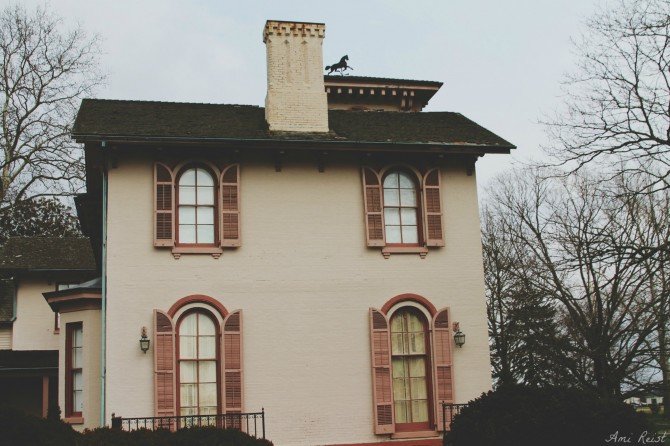 Italianate Style
Italianate Style
Delaware Governor William H. Ross built his brick Italianate villa just north of Seaford, DE. The house is notable as a well-preserved example of the Italianate style.
The Italianate villa Governor Ross built around 1859 has often been illustrated as an important example of the style. An engraving, most recently reprinted in John Maass’ Gingerbread Age: A View of Victorian America, shows the house with balconies, a spire, and a side porch that no longer exist. Even stripped down, the house contains the elements of the style.
Andrew Jackson Downing and his partner, Calvert Vaux, did much to popularize the Italianate or bracketed style of architecture. Governor Ross, or his unknown architect, clearly was a student of these designs; the Ross Mansion closely follows the home template in Vaux’s book, Villas and Cottages, which illustrates a Downing and Vaux design. In isolated rural Sussex County, such a stylish architectural innovation was certainly unique at the time.
Following his term as governor, Ross’ villa structure evolved from the original brick, two-story Federal Style house build by the John Tennent family. Tennent purchased this land about 1776 and sold it to the Governor’s father in 1836. A wooden section of the original structure is located in the back right corner of the home.
Three main two-story blocks of the house form an H-shaped plan. A three-story tower marks the central space. Frame wings on the back and a brick garage to the east have been added. The principal façade, to the south, displays the gables of the two side sections with round-headed windows. The main entry is through the tower which, together was a three-bay veranda, fills the south arms of the H.
A large veranda to the west has been replaced by a concrete-slab porch with iron railing. On the front, the canopy over the first-floor windows on the west wing, the balconies over the front door, and the cover over the balcony, have been removed. The scrollwork spire that once topped the tower has been replaced with a weathervane, depicting a galloping horse, on a plain lightening rod.
Inside, the mansion retains its plaster moldings, its Victorian trim, doors, and original inside shutters. Mantels in several rooms, however, have been replaced with large brick fireplaces.
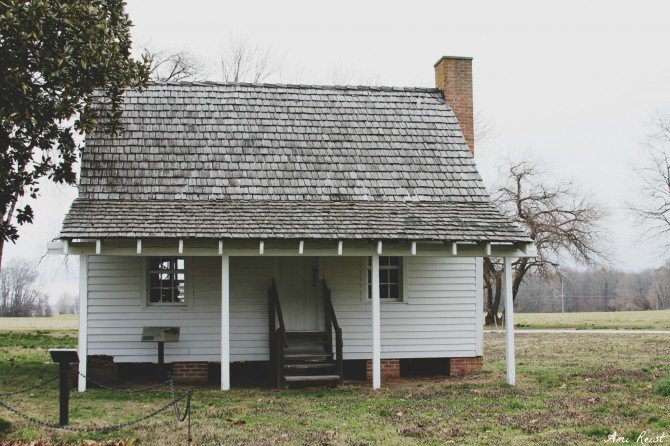 Plantation History
Plantation History
On the Ross property is the only document log slave quarter still in existence in Delaware. The 1.5-story framed quarter was 24/ by 16/ with a porch. The interior walls were lath and plaster.
Governor Ross has as many as fourteen slaves at one point in time. Some possibly lived in the mansion or other barns on the property. To the rear of the property are several farm outbuildings, all painted in matching brownish-red shades, that belong to the villa.
Following the Civil War and the end of slavery, this building was relocated northeast of the mansion. In its new location on the property, the roof was raised to make a two-story house for tenant farmers.
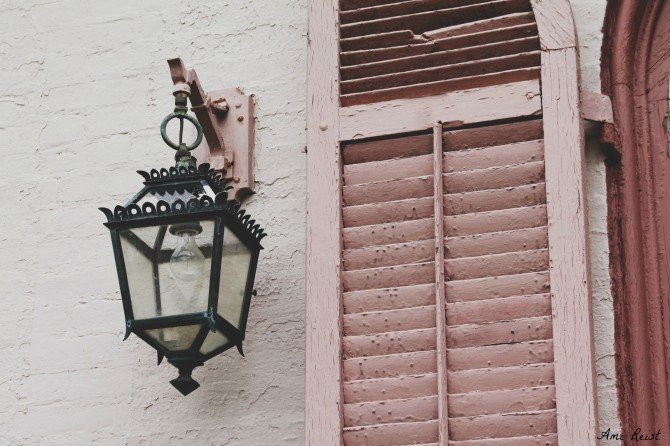 Preservation of the Mansion & Property
Preservation of the Mansion & Property
The Ross family owned the property until 1924 when they were forced to declare bankruptcy. As the property changed hands, the tenant farm house was neglected and fell into disrepair.
In 1989, the quarter was discovered by a great-great-grandson of Governor Ross while he explored the property then owned by the University of Delaware. The university president appointed an eight-member research team to document the 19th century log structure that had been incorporated into a two-story tenant farm house. The University of Delaware donated the quarter to the Seaford Historical Society in 1992.
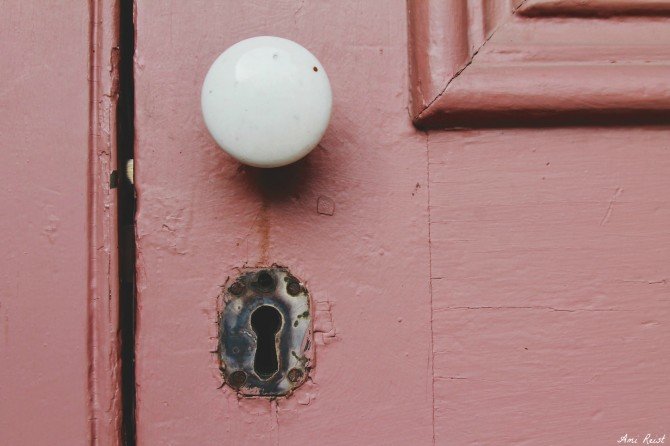 Tour the Ross Mansion
Tour the Ross Mansion
The Seaford Historical Society opens the gorgeous pink doors of the Governor William H. Ross House to guests on weekends year-round. The public is welcomed to enjoy the only site in Delaware that describes plantation life during the Civil War period. Guests can tour the mansion, the gatehouse, the slave quarters, and the property while learning about local history.
The Ross Mansion is open on Saturdays and Sundays (except on major holidays) from 1 – 4 pm. Admission is $5 per person at the mansion, or $8 for those who wish to also tour the Seaford Museum. Children under 12 are free with a paying adult.
Call the Seaford Historical Society for more information (302.628.9828) or visit them on the web: Seaford Historical Society.
Check out the gallery below for more photos:
Photos by Ami Reist.






